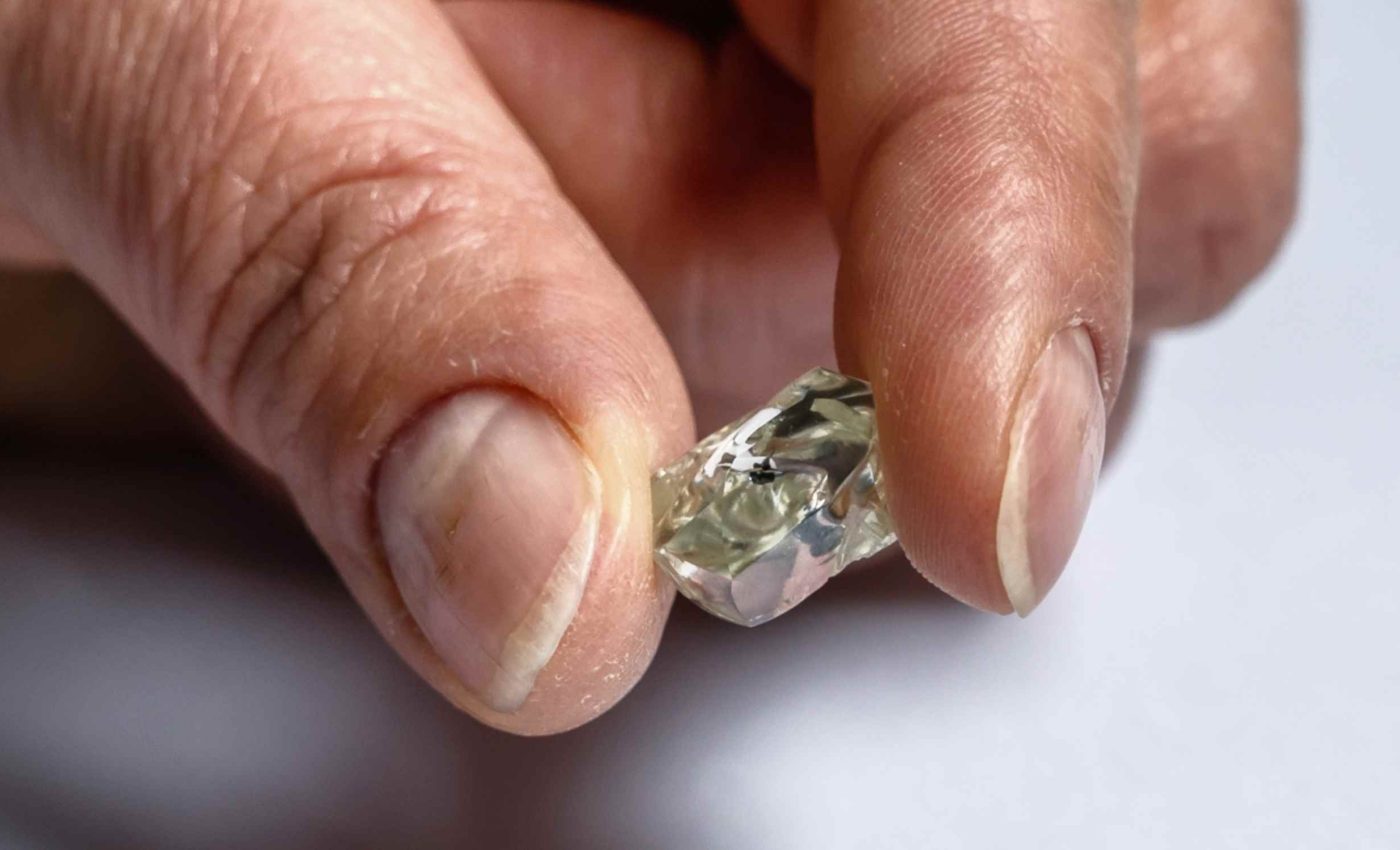
After fifty years of trying, science has created the toughest diamond on Earth in a laboratory
Lonsdaleite has attracted attention for decades due to its reported strength. Now, a dedicated group of researchers has manufactured this rare form of diamond in a laboratory.
Scientists from China have achieved something that has eluded researchers for 50 years. This milestone was guided by Dr. Mingguang Yao from the State Key Laboratory of Superhard Materials at Jilin University, working alongside colleagues from Jilin University and Sun Yat-Sen University.
A diamond with a twist
Lonsdaleite is a hexagonal diamond that was discovered in 1967. It naturally appears at meteorite impact sites but has proven elusive to recreate under controlled conditions.
Its crystal arrangement differs from the cubic structure most people associate with diamonds. That shift in structure influences how it behaves under stress.
Lonsdaleite is named in honor of Dame Kathleen Lonsdale, a pioneer in crystallography. Her work on crystal structures paved the way for deeper studies of carbon-based materials.
How a pencil lead turned into a gem
Researchers crafted lonsdaleite by pressing graphite to about 300,000 atmospheres. This pressure equals over four million pounds per square inch.
“The newly synthesized diamonds exhibit thermal stability and remain stable at extreme temperatures,” remarked Dr. Yao. They also raised the temperature to levels that force the carbon atoms to pack in a hexagonal pattern.
The approach required a delicate balance between temperature, pressure, and timing. Each variable had to be fine-tuned so the hexagonal arrangement would not collapse back into a more common phase.
Tougher than the usual sparkler
Scientists report that this material is 40% harder than a standard diamond. It endures extraordinary pressure without breaking.
Conventional diamonds require lower pressure during formation. Lonsdaleite demands roughly six times that requirement, which places it in a class of its own.
Studies suggest that the angled bonding in lonsdaleite gives it superior strength in certain directions. This directional hardness could prove valuable in demanding industrial environments.
Bigger size than earlier efforts
The new lonsdaleite samples measure up to 1.2 millimeters in diameter. This is a significant improvement over past results, which often produced only microscopic pieces.
Being able to see them without a microscope offers a glimpse of possible industrial uses. It also paves the way for more studies on large-scale production.
Producing millimeter-sized crystals may not sound impressive on paper, but it stands as a big leap for hexagonal diamond research. It offers a practical platform for material testing in real-world settings.
Why higher heat matters
Temperatures reached up to 2,012 °F. This level of heat stabilizes the hexagonal arrangement.
At milder temperatures, the structure can revert to a more common arrangement. The challenge was to maintain these conditions until the diamond was fully formed.
Scientists also found that specific temperature ramps must be followed. Quick spikes in heat can disrupt the crystal growth and lead to flawed samples.
Not ready for mass production yet
“Finding suitable catalysts can pave the way for this,” said Dr. Yao. The team aims to make production more efficient for industrial-scale needs.
Graphite sources must be optimized, and the extreme environment must be reproduced consistently. Researchers see these hurdles as stepping stones rather than deal-breakers.
Some researchers are experimenting with chemical additives to reduce the energy requirements. They hope to identify a pathway that brings down costs and improves reliability.
From meteor impacts to the lab
Lonsdaleite occurs when space rocks collide with Earth at high speed. That shock environment grants the high pressure and temperature needed for this unusual diamond.
Scientists have learned how to emulate that cosmic event in a controlled setting. They hope this knowledge will advance the design of ultra-durable components.
Analyses of meteorite samples reveal a chaotic environment that helps create hexagonal diamond. Lab setups must recreate that turbulence in a measured way, which is no small feat.
Potential uses beyond jewelry
This resilient diamond has possible applications in semiconductors. Its stability at soaring temperatures might be handy for electronics facing intense heat.
Engineers also see promise for industrial cutters and protective coatings. For now, those ideas remain in development as production obstacles remain.
Experts say that if scaling becomes feasible, cutting tools featuring lonsdaleite tips might outperform current industrial diamonds. The heat endurance also points to high-performance mechanical parts that can resist wear and tear.
A sign of changing possibilities
The success reflects a growing interest in novel carbon materials. New methods keep pushing the boundaries of what carbon structures can achieve.
This trend shows no sign of slowing as scientists refine processes and gather insights from natural occurrences. Lonsdaleite might stand at the forefront of these developments.
Some see this development as a call to revisit other niche carbon structures that haven’t been fully explored. With the right approach, new kinds of synthetic minerals may come to light.
Where science may go next
Researchers are exploring other temperature and pressure ranges to see if they can create additional carbon forms. Each form could show distinct mechanical or thermal features.
They also intend to explore better heat treatments to maintain the hexagonal shape. This opens possibilities for advanced materials research.
Cross-disciplinary research involving physics, chemistry, and materials science is emerging to push the boundaries further. Cooperation across these fields might unlock even more resilient carbon configurations. Efforts to explore lonsdaleite continue as labs worldwide chase an ideal technique.
The study is published in Nature Materials.
—–
Like what you read? Subscribe to our newsletter for engaging articles, exclusive content, and the latest updates.
Check us out on EarthSnap, a free app brought to you by Eric Ralls and Earth.com.
—–













